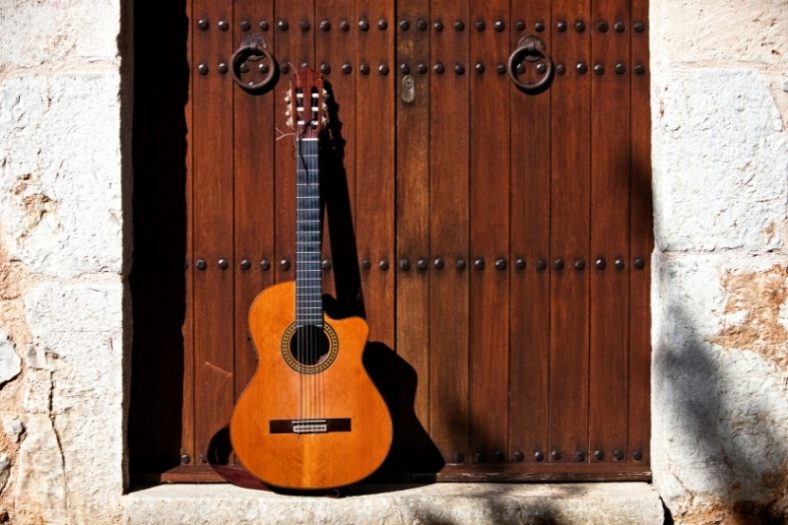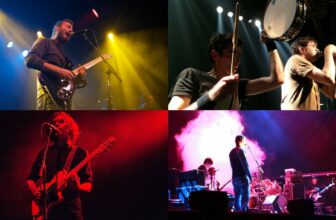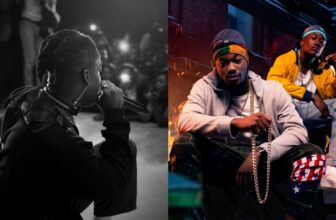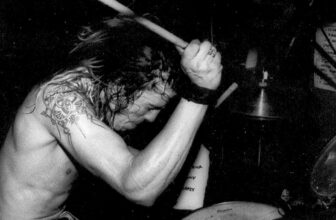10 Types Of Spanish Music to Get You Moving

Spanish music is broad genre that encompasses many different styles. Here are ten of the most popular types of Spanish music, which are sure to get you moving and grooving.
Contents
1. Salsa
Salsa is a popular type of Spanish music that originated in Cuba. It’s a mix of Afro-Cuban rhythms and melodies with some Jazz influences. Salsa is typically danced to by couples, and the movements are sensual and fast-paced.
The music is often lively and upbeat, and the lyrics are about love and relationships. The guitars and trumpets are what make salsa music so distinctive. One of the popular salsa songs is Marc Anthony’s “Vivir Mi Vida”.
Salsa music is best played when it is live and interactive. This means that the music should be played by a band or DJ. Salsa music can also be enjoyed in many ways, but the best way to experience it is to see it performed live.
2. Merengue
Merengue is a popular genre of music that originated in the Dominican Republic. It is a fast-paced, lively type of music that is often played at parties and celebrations. The lyrics of merengue songs are often about love, dancing, and having a good time.
Merengue was originally played on European-designed traditional string instruments like the acoustic guitar and bandurria. The Dominican peasants in Puerto Plata began playing this sort of music, which is accompanied by accordions and the güira, Tambora.
One top merengue artist is Luis Alberti, who made the song “Luna sobre el Jaragua”. Merengue is usually danced by couples, and the movements are quick and lively. Live merengue dancing is the greatest way to appreciate it.
3. Bachata
Bachata is a style of Spanish music that became popular in the 20th century, originating in the Dominican Republic.
As a ballad style of Spanish music, this genre is characterized by a bass line and bongos, and the rhythm is played on guitars and bongos. The Bolero sound, five-piece instrumentation, and romantic lyrics are the three dimensions of Bachata.
Aventura’s “Dile Al Amor” will quickly make you a fan. Bachata is well-known for its romantic lyrics that often talk about heartbreak, love, and sadness.
4. Reggaeton
Reggaeton is a type of music that originated in Panama and is popularized in Puerto Rico. It is a fusion of many different styles of music, including reggae, hip hop, and Latin American rhythms. Reggaeton is typically danced to by couples, and the movements are fast-paced and often sexually suggestive.
The lyrics of reggaeton songs are often about love, relationships, and partying. It is more of an underground genre of music, but it has become more popular in recent years. Daddy Yankee’s “Gasolina” will get you grooving to the beat of reggaeton.
Many nightclubs and parties feature reggaeton music, and it is also often played in Latin American restaurants and bars. You can never resist the beat of this music, and you will find yourself moving your hips to the rhythm.
5. Flamenco
This is a genre of Spanish music that originated in Andalusia. It may be a song, a dance, or both. It’s also possible that it refers to the (cante) song form or baile (dance). A Flamenco consists of three components: the musical tonality, the rhythm, and the performer.
An example of a flamenco song is Paco de Lucia’s “Seguiriya”. Paco de Lucia’s style of flamenco guitar, known as “tocaores,” differs from that of classical guitar players.
While the Classical guitarist leans his guitar against his left leg in a slanted position, the flamenco guitarist usually crosses his legs and supports it on the higher of the two, placing the neck in an almost horizontal orientation that paves away from the ground.
6. Jota
Jota is a genre of music that originated in Aragon. It is a folk dance and musical style that is typically performed by couples who sing and dance while holding each other. Jota is usually accompanied by castanets and performers wear cultural costumes.
An example of a jota song is “La Jota Aragonesa” by Paco Peña. This song is a traditional Aragonese jota that has been adapted for the guitar. Peña’s arrangement begins with a guitar solo, followed by the entrance of the castanets and the singing of the jota lyrics. The song then transitions into a faster-paced section where the dancers perform the jota dance.
7. Sardana
Dancing in a circle while holding hands, the Sardana is a traditional Catalan dance that is typically performed to music played by a band or orchestra.
Sardana music, in which the orchestra involves 11 people, the ‘cobla’ (a traditional Catalonian ensemble), uses wind instruments. One person uses a ‘flabiol’ (fipple flute), the ‘tenora’, ‘tible’ (both oboe-like instruments), and the ‘tambori’ (a type of drum). The music of the Sardana is in 2/4 time and is characterized by its use of minor keys.
An example of a Sardana song is “La Santa Espina” by Enruc Morera i Viura. Sardana music is an interactive experience where people come together to dance in a circle and enjoy the music. Sardana is a great way to experience Catalan culture and traditions.
8. Latin Pop
Up with the Pop! Latinos in the U.S.A. have had a huge influence in the music industry, and not just in the Latin genres. From Ricky Martin to Shakira, Gloria Estefan, Christina Aguilera, Enrique Iglesias, and many more, these artists have shown the talent that Latinos have to offer to the world of pop music.
Latin pop is a combination of traditional Latin sounds with pop music. An example of a Latin pop song is “Bailando” by Enrique Iglesias.
Why does Latino pop exist? It’s because the Latino community in the United States is growing, and with it, the demand for music represents their culture and identity. It also spices up the pop genre with a little bit of flavor.
9. Rock en Español
Of course, rock music has made its way to Spanish-speaking countries and has even influenced the development of a new genre known as “Rock en Español” or “Spanish rock”.
This type of music is characterized by the use of electric guitars, drums, and bass, as well as the incorporation of traditional Latin sounds and instruments. An example of a Rock en Español song is “Me Voy” by Julieta Venegas.
This genre of music is popular among Latino youth who are looking for a way to express their identity. It is also a way for them to connect with other Latinos who share the same taste in music.
10. Fandango
The fandango is a type of music and dance that originated in Portugal and Spain. It is composed of 2-4 dancers who sing and clap their hands to the rhythm of the music.
The fandango can be performed with or without instruments, but when instruments are used, they usually include guitars, castanets, and tambourines. The piece is in 3/4 or 6/8 time. The music has a few brief pauses, at which point the dancers freeze until the music starts up again.
The fandango is a song in the form of improvised satirical, religious, or romantic verses set to established rules. Fandangos may be sung alone or to accompany the dance. The Carmina Quartet’s “Boccherini’s Guitar Quintet G. 448 in D major” is a wonderfully played fandango song.
What are common instruments used in Spanish Music?
The common instruments used in Spanish music are the guitar, tambourine, and castanets. Even when instruments are used frequently in different styles, they play them differently, and each location has its particular dance style.
How Popular is Spanish Music?
Spanish music has become quite mainstream in the 21st century, with a growing number of Latino artists making a name for themselves in the music industry. From pop to rock, there is a type of Spanish music for everyone. Latin artists are now some of the most popular musicians in the world, and their influence can be seen in many different genres.
Conclusion
Whether you’re celebrating a fiesta or you just feel like dancing, Spanish music is sure to get you moving. With so many different genres and styles, there’s something for everyone. There are many different types of Spanish music, from rock to pop, and each type has its unique sound. Whether you’re looking for a catchy tune to dance to or a soothing ballad to relax to, you’re sure to find a Spanish song that you’ll love.





